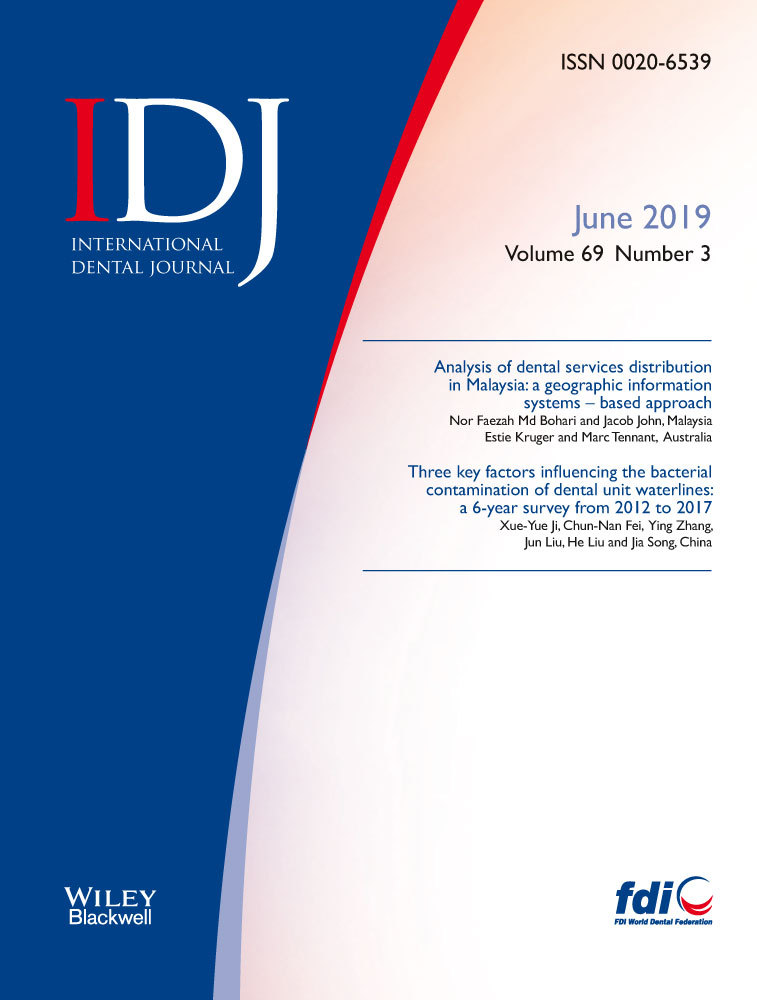Three key factors influencing the bacterial contamination of dental unit waterlines: a 6-year survey from 2012 to 2017
Abstract
Background
The contaminated output water from dental unit waterlines (DUWLs) is a potential risk to both patients and dental personnel who are frequently exposed to this water or aerosols.
Aim
The purpose was to evaluate the contamination level and prevalence of bacteria in the output water of DUWLs, and to identify key factors to provide technical support for formulating relevant policies.
Methods
We developed a special sampling connector designed for collecting dental handpiece output water and a measurement device to assess retraction of a dental chair unit (DCU). Output water from dental handpieces and air/water syringes were collected as representative of DUWLs. Water samples were tested with reference to China's national standard.
Findings
From 2012 to 2017, 318 DCUs were randomly selected from 64 hospitals in Tianjin, China. Of these DCUs, 78.93% had no disinfection to prevent DUWL contamination. Three-hundred and forty-three (56.14%) samples complied with the guidelines on DUWL output water. The highest concentration of bacteria was 1.8 × 106 colony-forming units (CFUs)/mL. The three key factors of influence were as follows: daily or weekly disinfection of DUWLs; water supply source being hospital self-made purified water or purchased purified bottled water; and DCU with a valid anti-retraction valve. Potential infectious agents, including Bacillus cereus, Burkholderia cepacia and Pseudomonas aeruginosa, were isolated.
Conclusion
There was a high rate of contamination in DUWLs. This highlights the need to develop national standards. There is a need to disinfect the DUWLs periodically and use a cleaner source of water; more attention should be paid to the efficacy of DCU anti-retraction valves.




